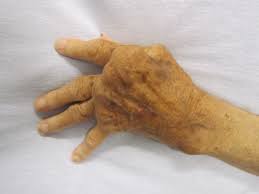Spondylosis Physiotherapy
Spondylosis is a very specific type of osteoarthritis in the joints of your spine bone (neck, back or sacrum), and it affects the center of the spinal verebrae and/or neural foramina.
Note: It can be easily misdiagnosed, so the doctor and physiotherapist needs to do differential diagnosis: if the same condition affects the zygapophysial joint instead, it is considered a facet syndrome.
In severe cases of spondylosis, it may cause additional pressure on nerve roots that’s in the spine; leading to nerve-related problems such as
- sensory issues: tingling, pain, numbness, pins and needles
- motor issues: weakness
Furthermore, if the space between two of the spine bones narrows, this will compress the spinal nerves, leading to radiculopathy with symptoms combination of sensory and motor disturbances, such as moderate-severe pain in their neck, shoulder, arm, back, and/or leg, as well as muscle weakness.
In more rare spondylosis conditions, a direct pressure on the spinal cord in the neck or back can cause myelopathy which has symptoms of
- generalized muscle weakness
- difficulty walking
- poor balance (increased falls risk)
- sometimes experience numbness and pins needles in hands or legs
- sometimes has problem with controlling their bladder or bowel.
Contents
Causes of Spondylosis
Spondylosis is a condition that can affect anyone, but it tends to affect more of older people because they have more wear-and-tear on the joints. The attending doctor will do some tests to confirm spondylosis diagnosis:
- Spurling’s test is performed by side flexing the patient’s head and placing downward pressure on it – A positive sign is neck or shoulder pain on the side to which the head is laterally flexed is predictive/confirmation of cervical spondylosis.
- Lhermitte sign is experiencing electrical sensations or shocks with movements of neck flexion; as well as decreased range of motion of the neck
- Imaging specificly MRI testing. MRIs are not invasive and is the most accurate test of all, but some patients may not like the claustrophobic feel or the repeated clanging sounds of the MRI. Sometimes one may feel a lot of heat (I did).
Treatments for Spondylosis Physiotherapy

The good thing is that spinal physiotherapy treatments of spondylosis is successful at least 75% of the time. Out of 100 patients with spondylosis, 75 of them will recover well to back and neck physio. Additionally, a significant number of patients’ pains and symptoms can be managed without the need for surgery.
Early / acute phase
During this phase, patients may be placed on some
- anti-inflammatories
- pain medications/painkillers and
- muscle relaxants
to manage and bring down the level of pain they experience, so that they can function and sleep (firstly), as well as have sessions of spinal physiotherapy to manage the spondylosis condition as well.
Some patients may need to have
that will help protect their injured back or neck from external forces that can cause additional damage to the area.
For spondylosis in the lower back, patients may be prescribed a specific lumbosacral orthothic device, which will help to decrease/offload the weight or load on your lower back by stabilizing your lower back spine.
Spondylosis physiotherapy treatment
Physiotherapy will include treatment modalities such as
- heat therapy such as heat pads or infrared heating lamps to relax the muscle spasms and muscles
- manual therapy
- ultrasound therapy to accelerate soft tissue healing
- gentle manipulation and mobilizations to loosen and glide the soft tissues and joints
- general strengthening
- stretches and soft tissue management
- neck traction or back traction
- balance training
Where To Next?
- Go to Home / Start
- Learn and find out more about your pains (bones, muscles, joints, tendons, ligaments, nerves etc) at Pain Conditions & Injuries
- Visit our shop to see products we recommend for pain relief, heating, treatments and more
- Contact us




